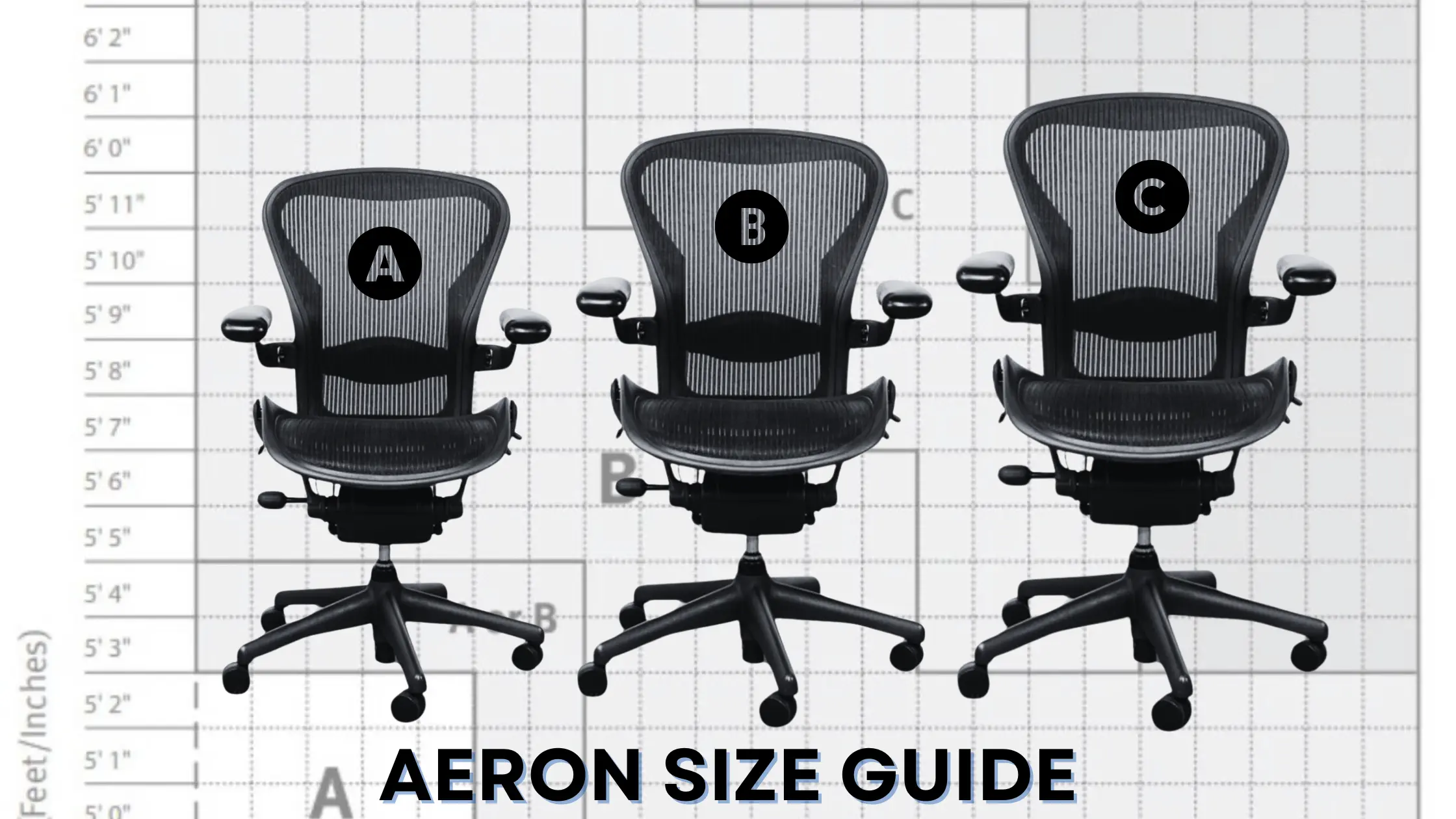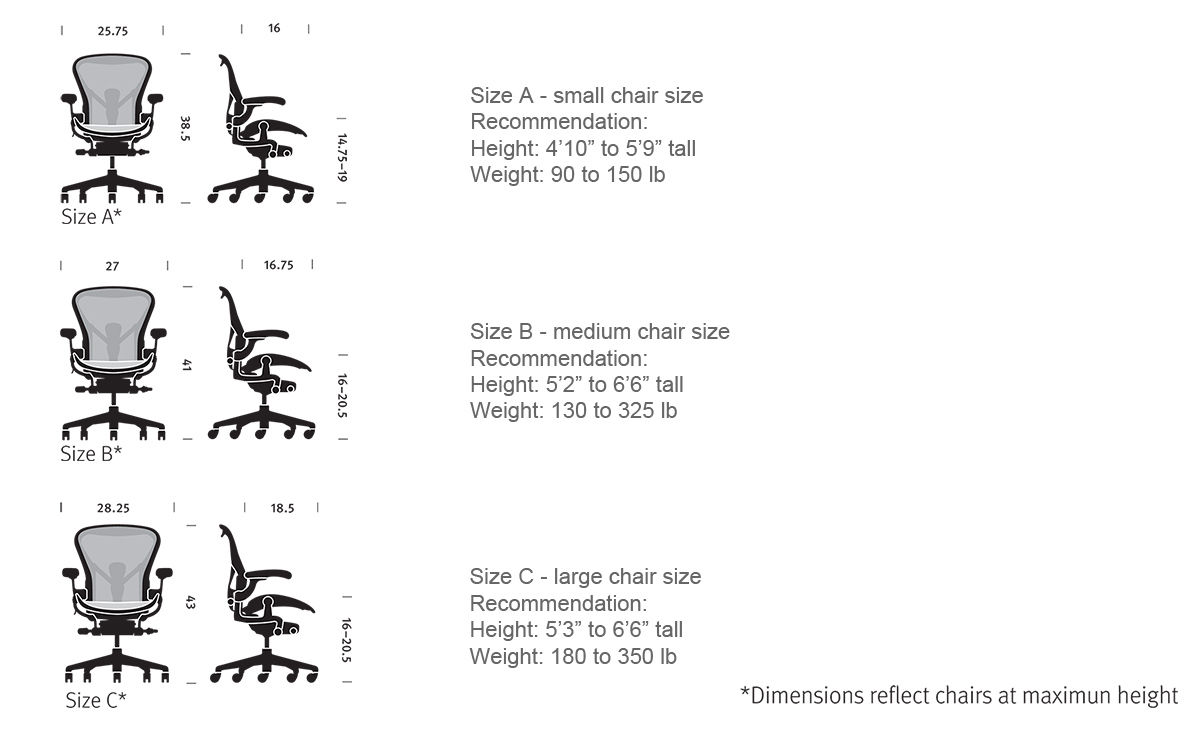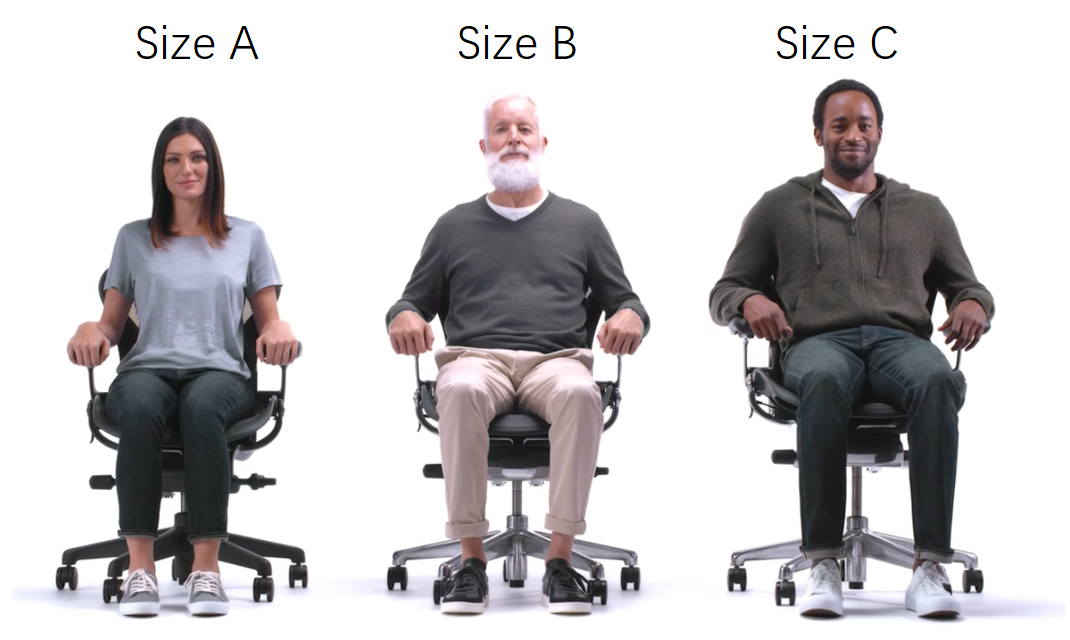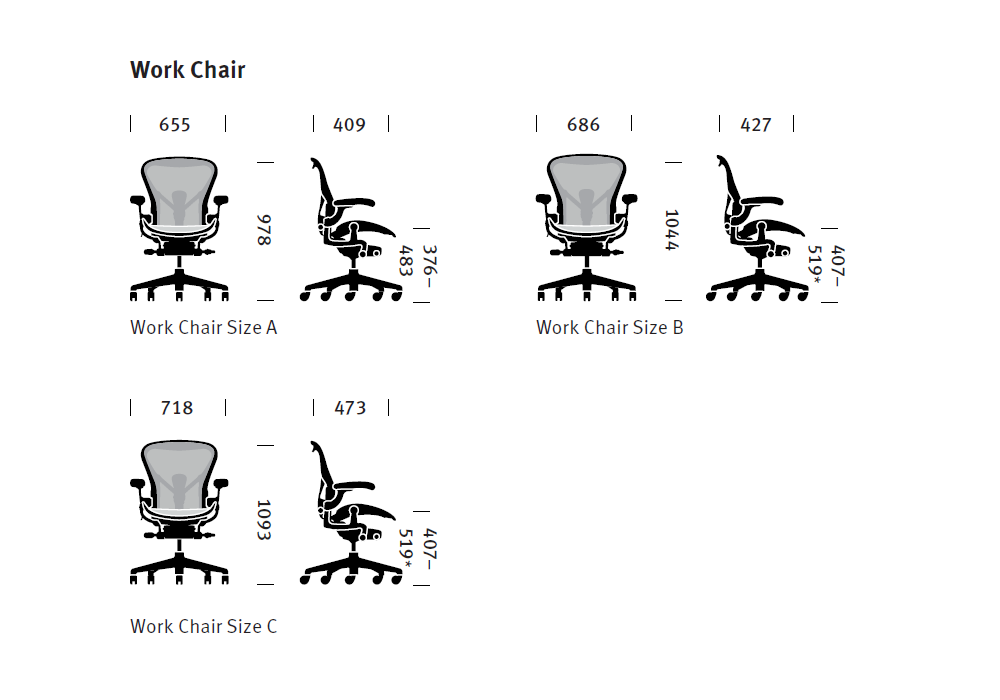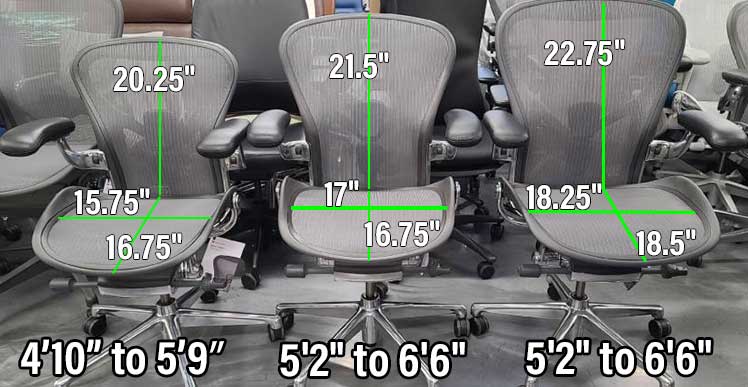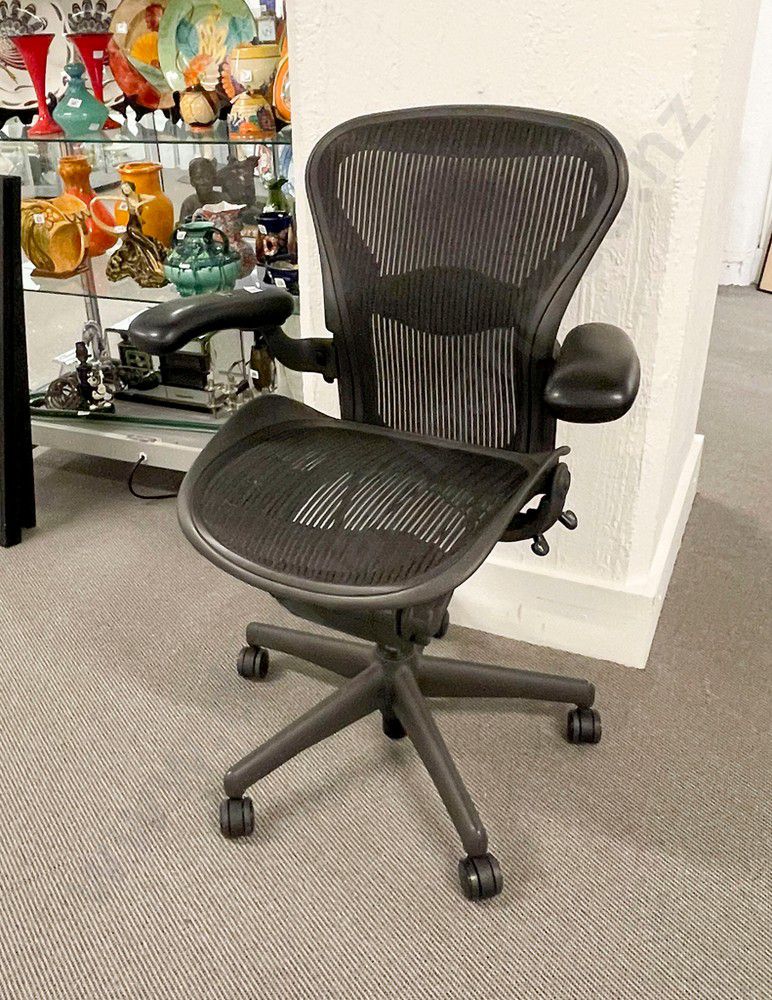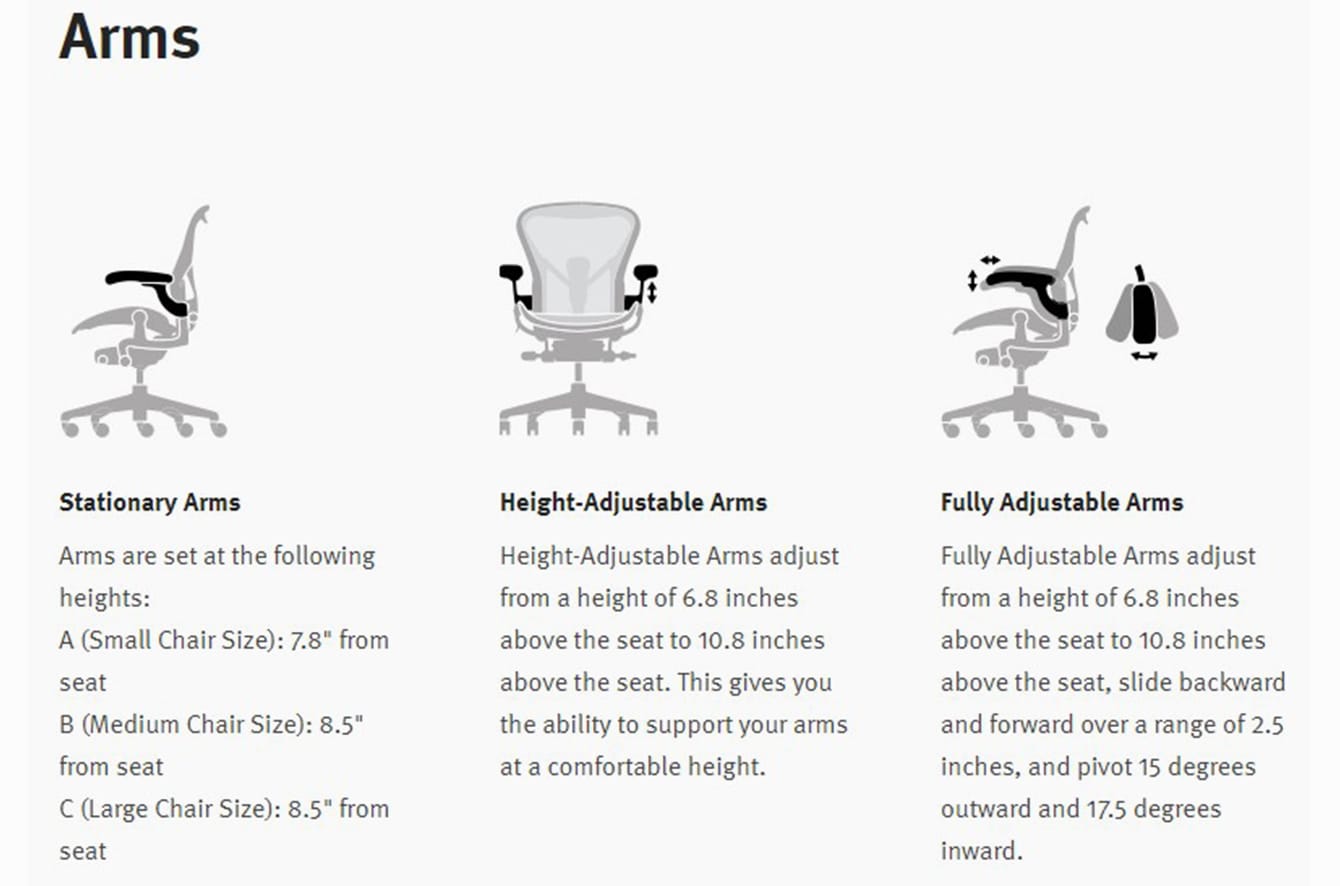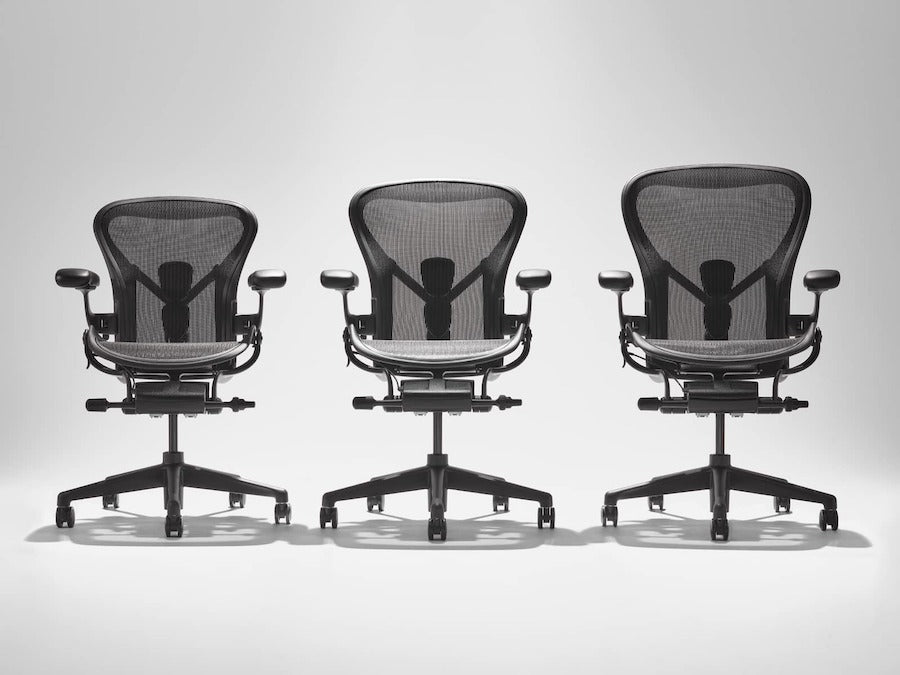How To Determine Size Of Herman Miller Aeron Chair
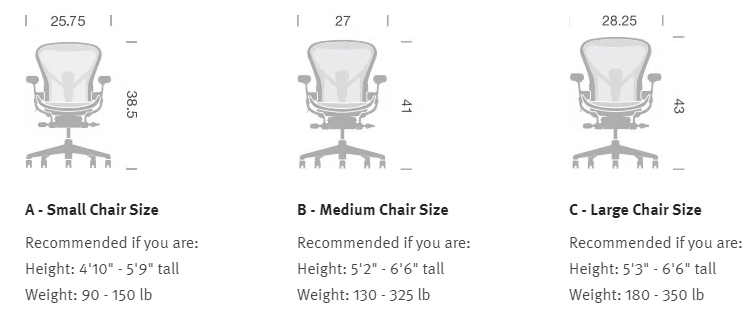
Imagine walking into a sleek, modern office. Sunlight streams through the windows, illuminating rows of ergonomic chairs. Among them, the iconic Herman Miller Aeron stands out, a beacon of comfort and productivity. But with three sizes available, how do you ensure this investment fits you like a glove?
Choosing the right size Aeron is crucial for maximizing its ergonomic benefits and preventing discomfort. This guide provides a simple, step-by-step approach to determine the ideal size for your body, ensuring a comfortable and supportive seating experience.
The Importance of Proper Fit
The Aeron, designed by Bill Stumpf and Don Chadwick, revolutionized office seating with its breathable Pellicle mesh and adaptable design. Its popularity stems from its ability to promote good posture and reduce pressure points.
However, these benefits are only fully realized when the chair is properly sized to the individual. An ill-fitting chair can lead to back pain, poor circulation, and decreased productivity.
Measuring Your Height and Weight
The primary factors in determining the correct Aeron size are your height and weight. Herman Miller provides a size chart that correlates these measurements to the appropriate chair size.
Generally, the Aeron comes in three sizes: A (small), B (medium), and C (large). Grab a measuring tape and a scale to get accurate readings of your height (without shoes) and weight.
Consulting the Official Size Chart
Visit the official Herman Miller website or a reputable retailer's site to find the Aeron size chart. These charts are usually presented in a clear, easy-to-understand table format.
Locate your height range on the chart and cross-reference it with your weight range. The intersection of these two ranges will indicate the recommended size.
For example, someone who is 5'8" and weighs 160 lbs would typically fall into the B (medium) size category.
Addressing Overlapping Measurements
In some cases, your height and weight may place you on the borderline between two sizes. For example, you might be tall but lightweight, or shorter but heavier.
When in doubt, consider your personal preferences and body type. If you prefer more room to move or have a broader build, opting for the larger size might be a better choice. Conversely, if you prefer a snug fit or have a petite frame, the smaller size may be more suitable.
Consider your comfort preferences and try out each size in person if possible.
The Seat Depth Test
Once you've identified a potential size, perform a simple seat depth test. Sit in the chair and ensure there's a 2-3 inch gap between the back of your knees and the seat edge.
If the seat is too deep, it will cut off circulation in your legs. If it's too shallow, it won't provide adequate thigh support.
Adjustability and Personalization
The Aeron's adjustability is a key feature that enhances comfort. Even with the right size, spend time fine-tuning the chair to your individual needs.
Adjust the lumbar support, armrests, seat height, and tilt to achieve optimal ergonomic positioning. Experiment with different settings until you find the most comfortable and supportive configuration for your body.
Remember, achieving perfect posture requires both the right size and personalized adjustments.
Beyond the Size Chart: Additional Considerations
While height and weight are the primary factors, other considerations can influence your Aeron size selection. If you spend long hours at your desk, prioritize a chair that offers ample support and adjustability.
Individuals with pre-existing back problems should consult with a healthcare professional or ergonomic specialist for personalized recommendations. They can provide expert guidance on selecting the appropriate Aeron size and making necessary adjustments to alleviate pain and promote healing.
Investing in the right Aeron size is an investment in your well-being.
Final Thoughts
Choosing the right Aeron size is an investment in your health and productivity. By carefully considering your height, weight, and personal preferences, you can unlock the full potential of this iconic chair and enjoy years of comfortable, supportive seating.
Take the time to measure yourself accurately, consult the size chart, and perform the seat depth test. And remember, personalized adjustments are key to maximizing comfort and achieving optimal ergonomic support.
